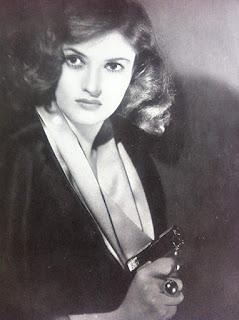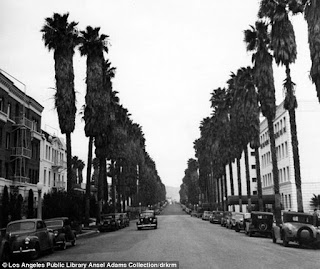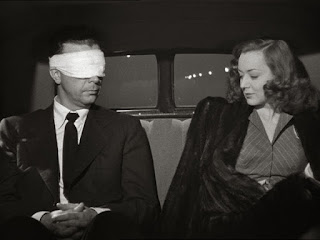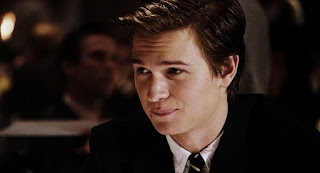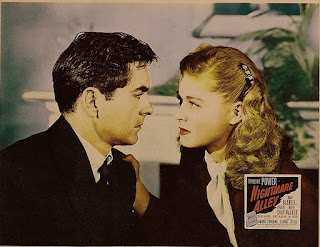In 1955 Raymond Chandler's The Long Goodbye won the Edgar Allan Poe Award by the Mystery Writers of America. Now Only to Sleep: A Philip Marlowe Novel (2018) has been nominated for a 2019 Edgar Award (Best Mystery Novel). In this brilliant novel, commissioned by the Raymond Chandler estate, the acclaimed author Lawrence Osborne gives us a piercing psychological study of one of literature's most beloved and enduring detectives, told with a contemporary twist. It is an unforgettable addition to the Raymond Chandler canon. The year is 1989, the Reagan presidency has just come to an end, and detective Philip Marlowe--now in his seventy-seventh year--is on the case again. For Marlowe, this is his last roll of the dice, his swan song, and he is back on his home turf. Set between the border and badlands of Mexico and California, Marlowe's final assignment is to investigate the disappearance of Donald Zinn: supposedly drowned off his yacht in Mexico and leaving his much-younger wife a very rich woman. But is Zinn actually alive, and are the pair living off the spoils? Lawrence Osborne's Philip Marlowe investigates. Source: www.amazon.com
In a 1945 essay, Edmund Wilson, America’s premiere man of letters in the 1940s, singled out Raymond Chandler's hard-boiled fiction for grudging praise. Dismissing the novels of Dashiell Hammett as little more than a comic strip, Wilson saw Chandler’s value as atmospheric: “It is not simply a question of a puzzle which has been put together but of a malaise conveyed to the reader, the horror of a hidden conspiracy that is continually turning up in the most varied and unlikely forms.” Chandler, who regarded Wilson as the kind of snobbish intellectual he despised, agreed. Chandler was clear-eyed about the reason Hollywood studios had hired him. He knew it was because of the atmosphere he gave to screenplays. Robert Towne cited Chandler’s description of California as the inspiration for his Academy Award-winning script for the neo-noir film Chinatown.
Ridley Scott and screenwriter Hampton Fancher summoned Chandler when they made the future-noir Blade Runner, with its burn-out, alcoholic detective played by Harrison Ford amidst a rain and pollution-drenched Los Angeles. Chandler was not crazy about The Big Sleep (he thought he ran his trademark similes into the ground). Nevertheless, the editors of this Black Lizard’s new annotated edition of The Big Sleep, Pamela Jackson and Anthony Dean Rizzuto, regard the novel as a masterpiece. Chandler considered himself “an intellectual, as much as I dislike the term.” Although he followed the prejudices of his day when dealing with gay characters (in The Big Sleep he called homosexuals “queens” and “fags), unlike other mystery novelists such as Jim Thompson or James Ellroy today, Chandler didn’t follow the noir theme of a good, honest man seduced and then brought down by a femme fatale.
By contrast, his female characters were sometimes perverted and insane, like the certifiable nymphomaniac Carmen Sternwood in “The Big Sleep” who, when angered, hissed through her animal-like teeth. Throughout almost all of the novels, Marlowe, in pursuing the task he was hired for, discovers along the way a much bigger crime. In The Big Sleep, Chandler was hired to muscle a blackmailer away from the Sternwood family. But he learns what actually happened to the father’s best friend, Rusty Reagan. Reagan didn’t run off. He was murdered by the spurned Carmen. Critics have often characterized Chandler’s plots as confusing. Chandler himself had no real interest in plotting. But read carefully, his novels did have a distinctive and pioneering plotting. In 1950, Chandler admitted modestly in a letter: "As I look back on my stories it would be absurd if I did not wish they had been better. But if they had been much better they would not have been published." “Chandler wrote like a slumming angel and invested the sun-blinded streets of Los Angeles with a romantic presence,” said crime novelist Ross Macdonald—author of The Way Some People Die (1951), reviewed by The New York Times as: “The best novel in the tough tradition I've read since Farewell, My Lovely and possibly since The Maltese Falcon.” The Chicago Tribune stated:“Ross Macdonald gives to the detective story that accent of class that Raymond Chandler did. His enduring virtue is compassion.”
Frank McShane wrote the first biography of Raymond Chandler: The life of Raymond Chandler in 1986. A Mysterious Something in the Light: The Life of Raymond Chandler (2012) is an interesting study by Tom Williams, an excellent examination of Chandler's personality and also provides insight into his style of writing. Judith Freeman investigated—in The Long Embrace: Raymond Chandler and the Woman He Loved (2008)—Chandler's romance and long marriage with Cissy Pascal. The final chapters are especially heartbreaking following Cissy’s death as Chandler spirals out of control. He’s rarely sober and while he’s often in and out of rehab facilities. Romances were attempted—notably Helga Greene, his literary agent and Jean Fracasse, his secretary—but eventually failed as he was never able to get over the loss of Cissy. His crippling loneliness leads to suicide attempts and cries for help before he ultimately passes away following a bout with pneumonia. "What a man wants and needs... and surely a woman too, is the feeling of a loving presence in the home, the tangible and ineffable sense that a life is shared," wrote Chandler in one of his letters, unveiled by Freeman. "To take care of Cissy. That was his driving life force," Judith Freeman concludes. Chandler turned himself into a crime writer for supporting his wife, while feeling he never "wrote a book worthy of dedicating to her."
Frank McShane wrote the first biography of Raymond Chandler: The life of Raymond Chandler in 1986. A Mysterious Something in the Light: The Life of Raymond Chandler (2012) is an interesting study by Tom Williams, an excellent examination of Chandler's personality and also provides insight into his style of writing. Judith Freeman investigated—in The Long Embrace: Raymond Chandler and the Woman He Loved (2008)—Chandler's romance and long marriage with Cissy Pascal. The final chapters are especially heartbreaking following Cissy’s death as Chandler spirals out of control. He’s rarely sober and while he’s often in and out of rehab facilities. Romances were attempted—notably Helga Greene, his literary agent and Jean Fracasse, his secretary—but eventually failed as he was never able to get over the loss of Cissy. His crippling loneliness leads to suicide attempts and cries for help before he ultimately passes away following a bout with pneumonia. "What a man wants and needs... and surely a woman too, is the feeling of a loving presence in the home, the tangible and ineffable sense that a life is shared," wrote Chandler in one of his letters, unveiled by Freeman. "To take care of Cissy. That was his driving life force," Judith Freeman concludes. Chandler turned himself into a crime writer for supporting his wife, while feeling he never "wrote a book worthy of dedicating to her."
Wallace Stegner once referred to California as “America only more so.” Interestingly, the politically correct of Chandler’s day, the American Communist Party, claimed Chandler as an authentic proletarian novelist. In response, Chandler revealed himself to be more politically astute than the dutiful Stalinist Dashiell Hammett. In a series of excellent letters—Chandler was as good at correspondence as he was with fiction—he informed the left that Marlowe didn’t hate the “rich because they take baths.” He hated them because they were “phony.” Politically, Chandler had no sacred cows. He denounced J.Edgar Hoover as inept and dangerous. He bashed the Catholic Church for having “fascist” tendencies. Yet he also was highly critical of Communism. Indeed, in his estimation, Catholicism came off better. Unlike Communists, they were capable of “internal dissent,” and in a typically pithy passage, he wrote that priests didn’t “shoot you in the back of the head for being 48 hours behind the Party line.”
Dmytryk's Murder, My Sweet and Hawks' The Big Sleep not only simplify Chandler's novels but also defuse Chandler's social critique, transforming plot and adapting characters when not eliminating them outright. Chandler was equally critical of other writers. For example, he lamented Hemingway’s poor performance in the late 1940s. James M. Cain, the author of the novel Double Indemnity that Chandler adapted for the screen, was akin to a pornographer. Chandler did, however, praise some writers such as Somerset Maugham, who set the gold standard for spy novels. And he was particularly admiring of F. Scott Fitzgerald. Fitzgerald and Chandler make an interesting comparison. Although Fitzgerald had a much more rosey-eyed view than Chandler, both were capable of poetic atmosphere. Toward the end of his life, Chandler came to feel that L.A. had become a grotesque and impossible place to live. It was a “jittering city,” sometimes dull, sometimes brilliant, but always depressing to him. In his later years, Chandler commented that he felt L.A. had completely changed in the years since he’d arrived. Even the weather was different. “Los Angeles was hot and dry when I first went there,” he said, “with tropical rains in the winter and sunshine at least nine-tenths of the year. Now it is humid, hot, sticky, and when the smog comes down into the bowl between the mountains which is Los Angeles, it is damned near intolerable.” Source: www.judithfreemanbooks.com



